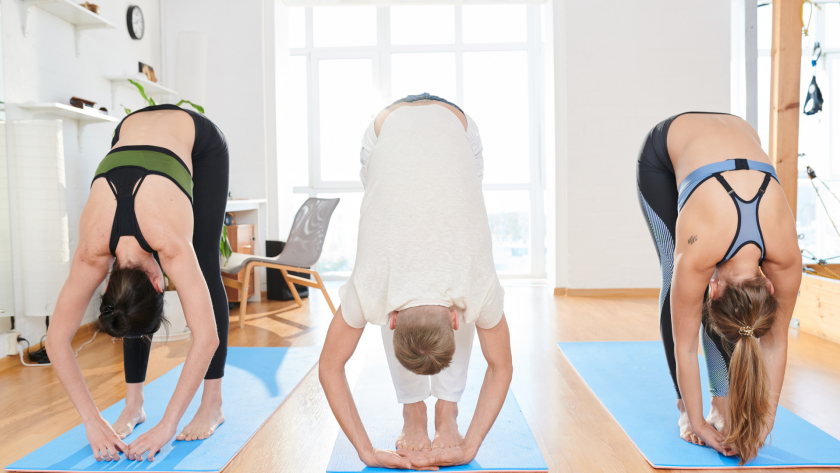It’s not news that people are increasingly working out at home, whether that means taking an exercise class at the local gym, practicing yoga at home, or running on a treadmill at home while watching Netflix. These at-home workout trends are thanks in part to the rise of at-home fitness apps like P90X, Insanity, and Zumba, which promise shorter, more intense workouts that can be completed in 30 minutes or less. But is working out at home safe?
When you have been working out for a while, your body may feel able to reach a certain goal. It’s time to take your workout to the next level. But what do you do when you plateau? Try switching to low-intensity workouts. These exercises increase strength, stamina, and endurance while only using less than 50 percent of your maximum heart rate. So, is it safe to switch from high-intensity workouts to low-intensity workouts? Yes, it is secure, and you won’t see the same results in the short term as you would from high-intensity workouts. However, the health benefits and low risk of injury mean this is a worthwhile switch.
You’ve probably noticed the trends if you’ve been working out for a while. Your exercise (and workout) routines change as the years go by. More often, people are turning to all the free-running, cycling, and elliptical videos online. They just need to power through their busy day and get it done, right? While working out at home may be convenient, it may not be as healthy as you think. In fact, research has shown that if you work out to the point that you’re breathing heavily, exercising to the point of exhaustion, or feeling your heart pounding, you aren’t doing yourself any favors. (You may even be doing yourself harm.)
What Kind of exercise are the Low-Intensity Workouts?
Low-intensity workouts are a big part of the fitness community, but what are they? Low-intensity workouts mean low cardiovascular intensity. Intensity measures how hard or how intense a workout is on a cardiovascular level. An intense workout is one in which your breathing is rapid, and your heart is racing.
Low-intensity workouts are a type of exercise that requires you to do a workout at a moderate pace but a slower pace than high-intensity workouts. This type of workout burns fat, but it’s a slower burn than high-intensity workouts, and thus it’s better for people who are trying to lose weight. Get at least 30 minutes of moderate-intensity exercise each day if you’re trying to lose weight. And your doctor may recommend more if you’re overweight or have a history of heart disease.
- Swimming
- Yoga
- Walking
- Biking
Swimming – Swimming is one of the best low-impact exercises. The resistance of the water provides a great workout, and it’s safe for all levels. If you have a pool at home, or if you’re planning on having one of those Vinyl Pools built, then you should know that fitness-wise it can be a great investment. Swimming regularly builds muscle strength and endurance, improves flexibility, and helps maintain healthy bones. Being a low-impact exercise, switching to swimming makes it suitable for people injured from sports. Given its numerous benefits, dedicating some time to this activity would be wise. Furthermore, if you have a pool at home that you’re not able to take advantage of, consider looking for an Iowa pool service company that can fix things up for you to fully enjoy the benefits of regular swimming.
Walking – Walking isn’t the most exciting of workouts, so it’s no surprise that many people will take it a little easy on it. But walking doesn’t just burn calories-it has been shown to improve cognitive function, prevent the onset of dementia, and is incredibly effective at improving mood. Low-intensity walking is also a great way to keep your muscles strong as you age, and for just 30 minutes per day, you can experience the physical and mental health benefits.
Yoga – Yoga can be a great way to stretch and strengthen your muscles, improve your cardiovascular system, and enhance your posture, especially if you’re flexible. It’s also an excellent workout for your mind, as yoga involves focusing on your breathing, which promotes calmness and meditation. To further enhance your yoga sessions, consider constructing a summer room in your backyard. This way, you can practice yoga amidst the greenery and morning sun, making your practice even more rejuvenating and invigorating. You can visit the website of a reputed sunroom contractor in your area to create your perfect workout space.
Bodyweight Exercises– Perform bodyweight exercises such as squats, lunges, push-ups, and planks in your backyard to build strength, endurance, and overall fitness. However, to ensure a safe workout environment, consider using tools like a cordless weed eater to eliminate potential hazards such as overgrown weeds or stray branches. Additionally, clear the area of any debris or obstacles that could cause trips or falls during exercise. Ensure the ground is level and stable to provide secure footing for performing exercises. Furthermore, leverage outdoor features like benches, stairs, or tree branches to add variety to your workout routine.
Biking – Biking is a great low-intensity exercise that can burn about 260 calories in 30 minutes, according to the American Council on Exercise. There are plenty of ways to incorporate biking into your workout schedule, and it’s a great way to minimize your risk of injury.
Low-intensity workouts are not confused with “no impact” workouts, which can be just as dangerous. Low-intensity walking and cycling are low-impact workouts. Low-intensity workouts can be great for older adults, those with injuries, and those recovering from surgery. The key is to select an exercise routine that is right for your level of fitness and to choose a physical activity that you enjoy.




